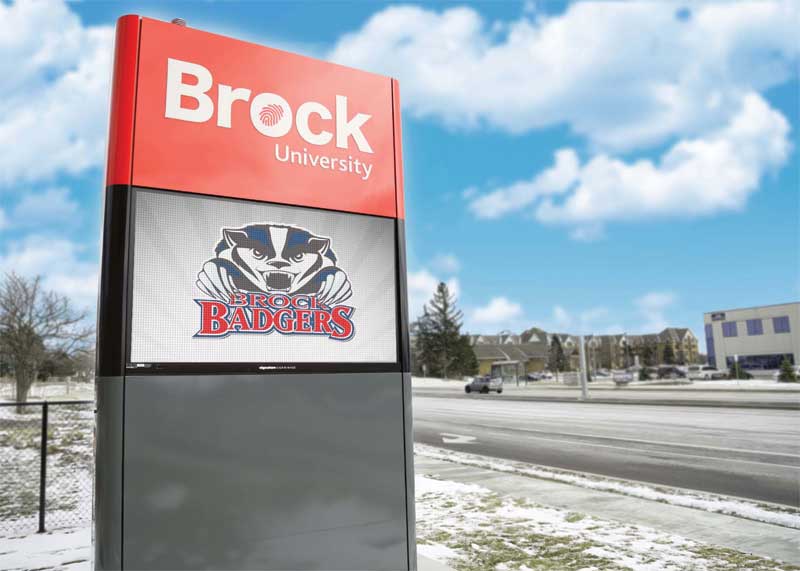By Craig M. Berger
Outdoor digital signage has become less expensive and more accessible over time for retailers, institutions and other sign shop clients, but still requires a significant commitment in terms of money and time to source, install and manage. When developing a strategy and diving into all of the details of hardware and software,it is very important to understand the potential return on investment (ROI) and clearly lay out the entire process, to ensure a successful deployment.
Determining the return
Developing digital signage for exterior environments—whether oriented toward private businesses or public institutions—represents one of the most difficult challenges in the industry, as the medium has a particularly big impact on the community and on business communications. It calls for a deliberative strategy and process.
There are multiple metrics and approaches an organization can use to justify the implementation of digital signage. One simple option that encapsulates most of them is ‘return on experience’ (ROE), which is determined by considering the following three key elements:
Brand identity
An outdoor screen can support and even enhance an organization’s brand identity, with an enormous impact on the public’s view of it. This can be accomplished by showcasing engaging, non-obtrusive content, reducing visual clutter and serving as a community resource. Digital signage can provide powerful benefits at a shopping mall, for example, by reducing and simplifying a wide variety of messages.
Media channels
While digital out-of-home (DOOH) advertising can compete on cost-per-impression with many other paid media, including TV, radio and newspapers, this does not mean installing a screen will be cost-effective without a clear sales plan.
On the contrary, digital signage is relatively expensive to start up and operate, becoming cost-effective only when properly integrated into a larger strategy to maximize its number of impressions and drive the impact of its content.
Studies by the Sign Research Foundation (SRF), among others, have shown planning is particularly important for success with outdoor digital signage because there is wide variability in cost-per-impression across deployments, compared to other media.
Experience optimization
With a well-thought-out content plan, digital signage can help track the public’s habits and respond to them quickly, e.g. by changing messages based on the time of day or on increased business.
“Some restaurants link messaging to their food supply chain, to control waste by changing specials based on inventory,” says John Kunze, a division sales director for Watchfire, which manufactures outdoor digital signs.







